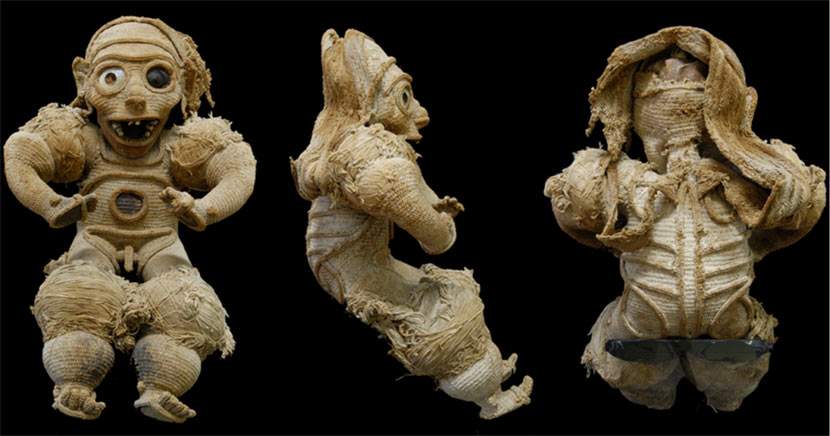Dominican Republic asks Italy to return a very rare idol kept in Turin, Italy
A unique find in the world: it is the “Zemi” from the Museum of Anthropology at the University of Turin, an extremely rare pre-Columbian idol, the only one made of cotton that has been preserved to this day. It is 70 centimeters in height, made of woven cotton fibers, with some human bones of a skull inside, and is evidence of the ancient Taino culture, a population of the Antilles that disappeared (it was practically zeroed out following the colonization of Cuba and Hispaniola: if in 1508 it consisted of about 60,000 individuals, only about thirty years later they had been reduced to a few hundred), which used the “Zemi” as part of sacred ceremonies, to evoke magical powers.
A request from the Dominican Republic is apparently on its way to Italy for the return of this precious artifact: the zemi in fact comes from the island of Hispaniola (it probably dates back to the 15th-16th centuries). Reporting the news, citing Dominican sources, is the Spanish daily El País, while the Dominican newspaper Diario Libre reports that the Caribbean country’s culture ministry has said it will make every effort to bring the only cotton zemi in existence in the world back to the island. “We are joining efforts with our embassy in Italy through Ambassador Tony Raful,” said Minister Carmen Heredia, “to recover the zemi, with the aim of preserving the national cultural heritage, of which this Taina deity that represents a fundamental part of our Dominican history is a part.”
From what is known, the zemi appears to have been found in the late 19th century in a cave in the Dominican Republic, formerly a cultic site of the Taino people, by a local hunter, and then allegedly brought to Italy in 1903 by a Mr. Cambiaso, who had business in the Caribbean island. However, there is also another version of the facts, according to which the zemi was donated to a namesake, Admiral Giovanni Battista Cambiaso (also from Genoa, known in the country as Juan Bautista Cambiaso, considered the founder of the Armada de Republica Dominicana, or the Navy of the Caribbean republic, a hero of the Dominican War of Independence won against Haiti as he participated as one of the commanders, and late in his career Dominican consul in Italy), directly by Dominican President Pedro Santana even in 1848. But even following this line, it is not well understood how the zemi ended up in Italy. The only document attesting to certain information dates back to 1928, certifying the donation of the Zemi to the Museum of Antiquities in Turin by Ernesto Schiaparelli, then director of the Egyptian Museum in Turin. As mentioned, however, earlier steps are to be clarified.
Dominican historian Bernardo Vega believes the information referring to an alleged donation to Giovanni Battista Cambiaso is false, and according to Diario Libre is the version provided by the Turin museum (we asked the museum staff for clarification on Jan. 26, but have not yet received a response). “This is the first time I’ve heard it,” said Vega, "and I don’t think it’s true that Pedro Santana donated the artifact to the Cambiaso family. I don’t think it’s true because the object was still in the country in 1905, and El País says it was donated by Santana in 1848. I think the information is false."
All that is known at the moment is that Italy and the Dominican Republic will work together to find out in detail the history of the object, which will then clarify who will be responsible for keeping it. For the time being, meanwhile, the zemi remains well hidden: in fact, the Museum of Anthropology has been closed to the public since 1984, and the ancient idol is only rarely displayed during temporary exhibitions outside its premises.
Pictured: the zemi in Turin
 |
| Dominican Republic asks Italy to return a very rare idol kept in Turin, Italy |
Warning: the translation into English of the original Italian article was created using automatic tools. We undertake to review all articles, but we do not guarantee the total absence of inaccuracies in the translation due to the program. You can find the original by clicking on the ITA button. If you find any mistake,please contact us.




























